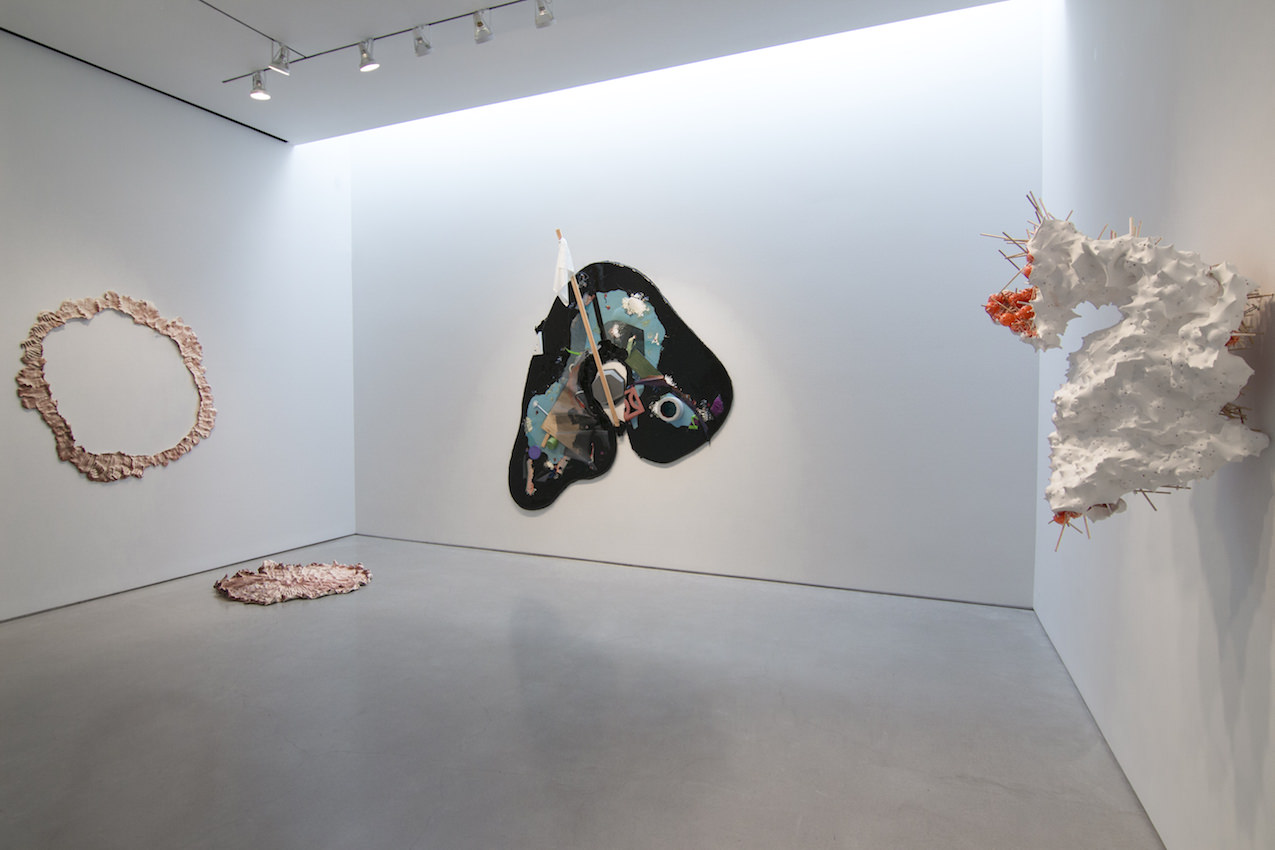A well-inked block splashing into white cloth in the center of the gallery sets off Matsutani “Gutai Spirit Forever Part II” at Galerie Richard, on view until April 27. The motion and pensive energy is continued by a group of conversing black and white graphite paintings of various sizes – images of the perfect Zen circle interrupted by a hazy smear, faint waves on a sea of silken blackness, and graphite applied over a delicate, bloating bubble of wood glue. Compared to the wildly eclectic Gutai shows at the Guggenheim, SFAI and even at Hauser and Wirth last year, this exhibition, which documents the post-Gutai career of Takesada Matsutani, is concise and quietly intense.
Gutai was one of the more stylistically diverse, structurally organized artistic movements from the 20th century. The explosive innovation documented by the Guggenheim exhibition spanned 18 brilliant years, and ended abruptly with the death of Jiro Yoshihara, the group’s leader. “Gutai was most dynamic from it’s beginning in the mid fifties until the mid sixties, and then had interesting new blood at the time of the Osaka expo in 1970. Such a movement in art is a strong flame, [and] any attempt to continue as a group leads to mannerism,” said Matsutani. “Out of respect for Yoshihara and imbedded in the Japanese psyche of respect for a master the group only dissolved at his demise.”
Perhaps the most fascinating aspect of the show is that Matsutani amplifies Gutai’s pursuit of absolute freedom of expression and “the scream of matter itself” through, curiously, severe restraint. In these canvases, he has not only subtracted color but also in-between gray tones, relying solely on the starkly contrasting black and white to gingerly convey an impressively nuanced array of sensations. Matsutani forgoes the rich, malleable textures of paint and opts to orchestrate the subdued, but salient luster of graphite, giving his works a disciplined incandescence. “From my experience with Gutai there are no limitations,” he said. “Each one of us is free to investigate his/her imagination that is very important to stay free in one’s mind and I can tell you that I feel very strongly one needs to influence oneself.”
Born in Osaka in 1937, Takesada Matsutani began his artistic exploration in 1956 with Nihonga, a traditional Japanese painting genre. His paintings soon veered away from this time-honored style, as his subject matter became more abstract. In 1960, Matsutani participated in his first exhibition with the Gutai group in the Pinacotheca Gutai. He had become a member and was exhibited regularly until the dissolution of the group in 1972. He received a grant to study in France and settled there since 1966. Matsutani continues to testify his commitment to the aesthetic and conceptual statements of the movement, and his works have been exhibited widely in Japan, France, and Germany since the dissolution of the Gutai group.








